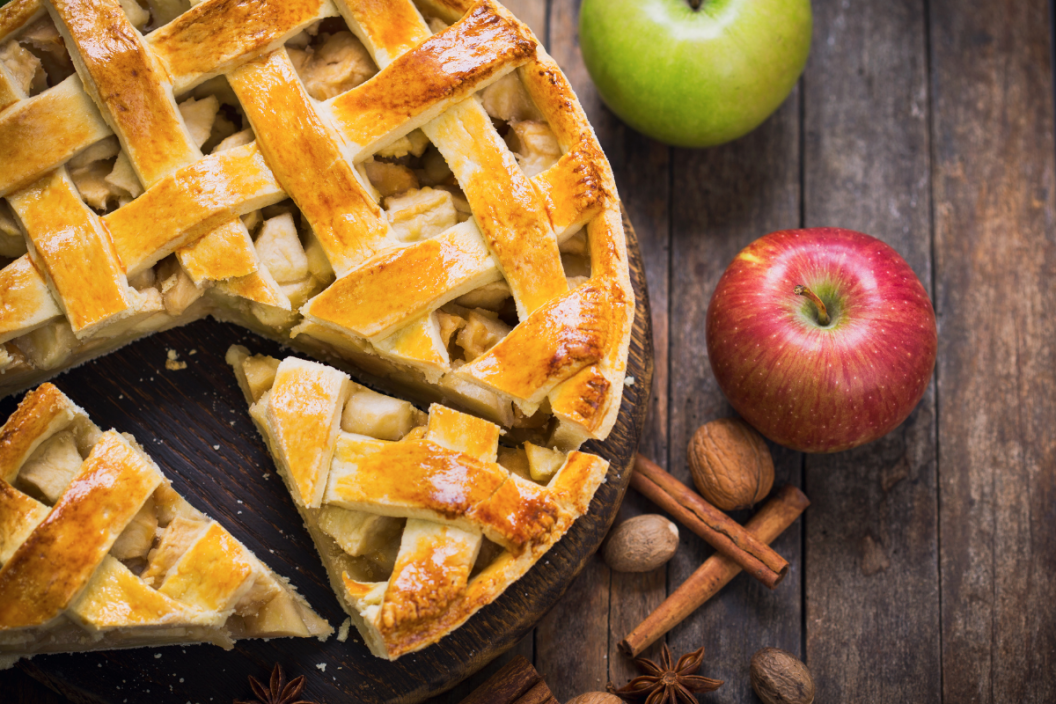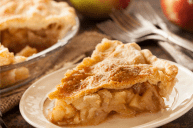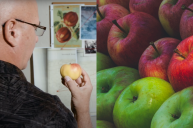Apple pie is a staple dish on Thanksgiving tables and in Fourth of July cookouts. This dessert is considered quintessentially American, right up there with baseball and pickup trucks. However, the history of apple pie reveals that it was many things before becoming American.
Videos by Wide Open Country
The First American Apples
As much as we love apples here in America, the fruit isn't actually native to our country. The only native apple in North America is the crab apple, and upon trying it, the colonists called it "a poor substitute for Malus domestica." The early colonists brought European apple tree seeds and cuttings with them when they came over, which is where the first apples in America come from.
As colonists continue to come to America and settle on land, families would make "land claims" within their colonies. Some colonies, such as Virginia, encouraged the colonists to "improve" the land they claimed, and could take it away if this wasn't followed. This led to many colonists planting apple trees to keep their land.
Although historians aren't clear on which apple variety was first planted, by the 1800s, there were about 14,000 varieties of apple being grown in the states. Farmers grew them for apple cider, so the varieties were tart rather than sweet.
Johnny Appleseed is also part of the history of apple pie in America, as his fame brought apples into the limelight of American culture. Interestingly, although the story goes that he grew delicious apples, in reality he actually just made apple cider from the sour crabapples.
Apples Around the World
Although apples are new to North America, they were already a part of European and Asian cuisine for thousands of years before being brought to the New World. The first written acknowledgement of the apple was in 328 BCE, when Alexander the Great observed that Kazakhstan's apples were smaller than he was used to.
The first recipe for apple pie was in England in 1381, and by the end of the 14th century, apple pies were popular in England, among other varieties of sweet and savory pies. However, the first English apple pie recipes were made with a "coffin pie crust," an inedible container. Along with this difference, these early pie bakers didn't use sugar, which was very expensive at the time. In the 15th century, Dutch apple pies with lattice pastry crusts were created, and eventually the apple pies we know and love were beloved throughout Europe.
Apple Pie In America
https://www.instagram.com/p/CT2trucLuxD/
Apple pie was all the rage in Europe, so it only follows that it would eventually be brought to America by settlers not willing to leave this fruit dessert behind. Specifically Swedish, Dutch and British pilgrims are shown to have brought apple pie to America. Then, in 1697, Allan Metcalf's book America in So Many Words: Words that have Shaped America was published, with the first mention of apple pie in America.
Then, in 1796, Amelia Simmons published the first cookbook in America, American Cookery, featuring two apple pie recipes. Because of this and the growing love of apple pie, the beloved dessert became part of American cuisine in the 19th century.
By the 20th century, it was elevated from culinary to cultural, and apple pie became a part of American culture. Once the 1940s rolled around, the phrase "as American as apple pie" was a commonly used expression of patriotism. Although historians have a few theories to how this phrase came about, all can agree that advertising, news and war were part of the story.
In 1902, a newspaper article proclaimed that "no pie-eating people can be permanently vanquished" in a statement of confidence. Then, in 1924, an advertisement said that "New Lestz Suits that are as American as apple pie." A few years later, a New York Times article mentioned apple pie in a description of the homemaking skills of First Lady Lou Henry Hoover.
By World War II, American apple pie was a symbol of America and home, and soldiers were announcing that they were fighting for "mom and apple pie." Following the war, Americans continued to love apple pie, and we fully embrace it as an American dessert despite the winding road it took to get here.




